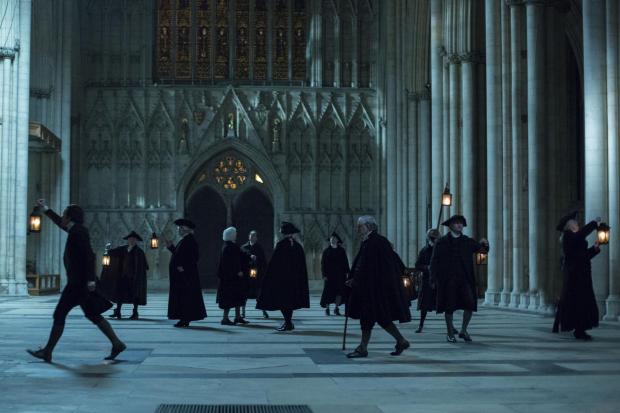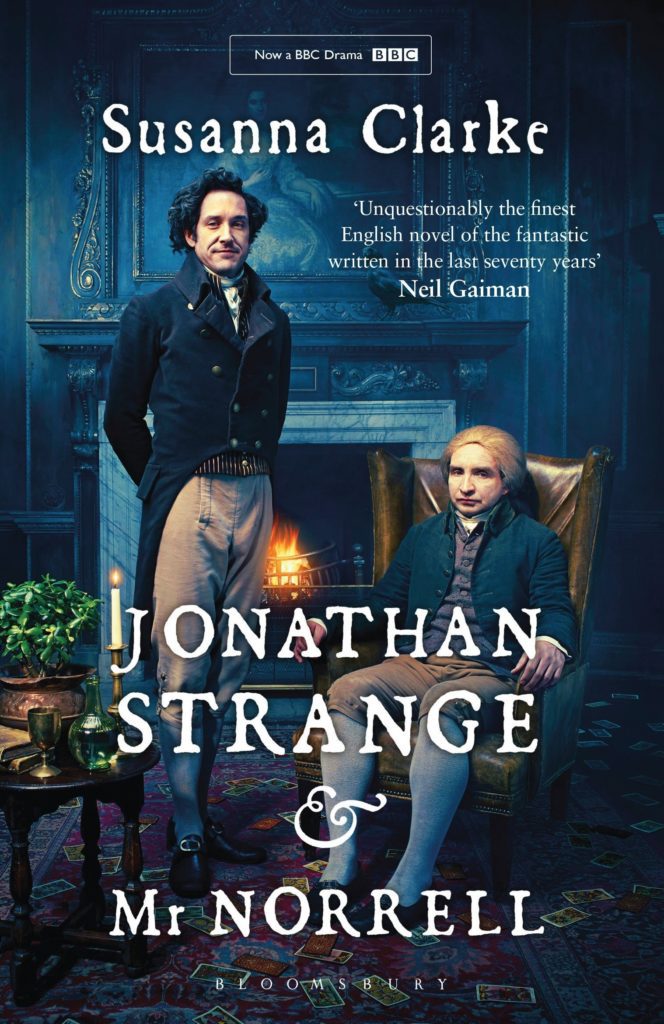Why are there no more magicians in England?
In the Napoleonic era one man asks the question. Just why are there no more magicians in England? Yes, there are those who study magic, but there are no more practical magicians left. This at a time when the French emperor is trampling all over Europe. Thus far, England has been unsuccessful in defeating the French and the heads of state are becoming desperate.
Out of the shadows comes a man named Mr. Norrell. He is a magician and insists he is capable of doing magic in the modern world. As proof, he makes York Cathedral come to life. Cementing his reputation, he heads to London to convince more important people of his talent.
In the meantime, a foppish Mr Strange inherits his father’s estate, but in order to win his sweetheart’s hand in marriage, he must prove himself worthy. In search of a gainful occupation, he stumbles upon magic. It turns out he has a natural talent for it. Mr. Norrell recognizes he should keep Strange close and teach him properly.
Meanwhile, ancient magic is awoken and begins to creep into the modern world. All the supernatural world awaits the return of the Raven King.

The 1000 page book traces their adventures in friendship and rivalry. It follows Wellington to the battle of Waterloo and Lord Byron makes a cameo appearance. Clarke weaves true historical events into this fantastical realm. This magic lives just on the edges of real life.
The two main characters are perfect foils to one another. Norrell is awkward, studious and strait-laced. Strange is gregarious, foolhardy and often dismissive. The story of each is best shown in the light of the other.
BBC has produced a 7-part adaptation, and so far, it is true to the book. It’s well-cast and acted. The only drawback, as with any book-to-screen project, is the loss of some of the exceptional prose. As strong as the show is, the viewer doesn’t enjoy things like this:
Ashfair was inferior to many houses that he had seen in the intervening years. It has almost as many gables as windows. Its rooms were all low-ceilinged and oddly shaped. The many generations of inhabitants had placed the windows in the walls just as it had pleased them — the windows themselves were darkened, every one, by the roses and ivy growing up the walls. It was an old-fashioned house — the sort of house in fact, as Strange expressed it, which a lady in a novel might like to be persecuted in. ~Pg. 618
The door opened to reveal a tall broad fellow of thirty or forty. His face was round, white, pockmarked and bedabbled with sweat like a Cheshire cheese. All in all he bore a striking resemblance to the man in the moon who is reputed to be made of cheese. ~ Pg. 443
The writing is humorous and detailed. Also central to the book, are the significant footnotes. Sometimes entire fables and short stories, multiple pages long, are told through these footnotes. She cites other works written by her own fictional characters, adding another thread to the tapestry. It’s an impressive work.
You can watch the adaptation on Saturday nights on BBC America.
Many thanks to Bloomsbury for the movie tie-in edition review copy.
_____________________
Paperback: 1024 pages
Publisher: Bloomsbury USA; Mti edition (May 26, 2015)
Language: English
ISBN-10: 1620409909
ISBN-13: 978-1620409909
Product Dimensions: 5.5 x 2.7 x 8.2 inches

